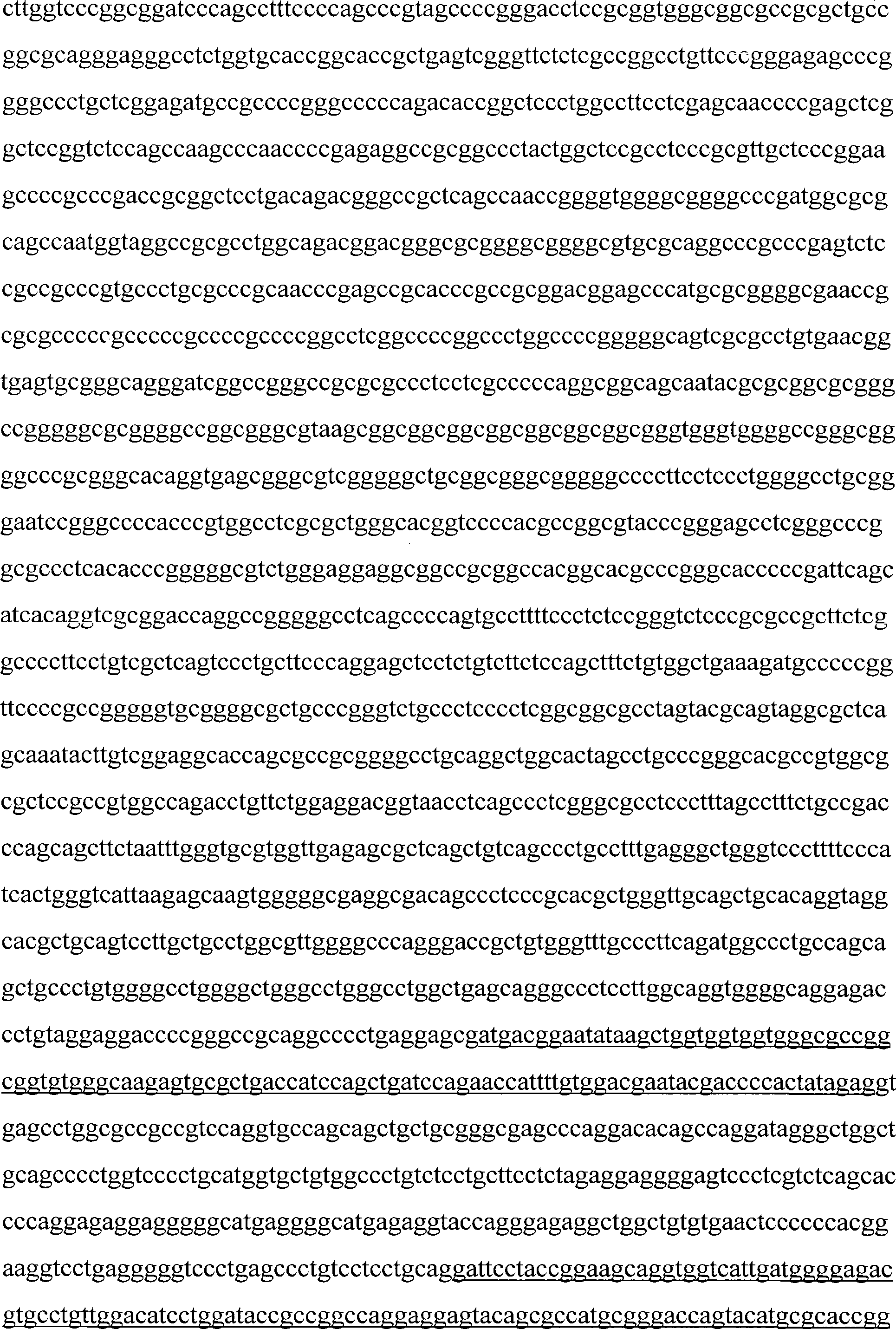Producing method of transgenic mouse containing anthropogenic proto-oncogene c-Ha-ras and application thereof
A c-ha-ras, proto-oncogene technology, applied in other methods of inserting foreign genetic materials, genetic engineering, plant genetic improvement, etc., can solve the problems of tumor confusion, unfavorable model animals, etc., and achieve the effect of fast growth
- Summary
- Abstract
- Description
- Claims
- Application Information
AI Technical Summary
Problems solved by technology
Method used
Image
Examples
Embodiment 1
[0036] Example 1: Isolation of human proto-oncogene c-Ha-ras DNA
[0037] 1. Structure of human proto-oncogene c-Ha-ras DNA
[0038] The invention relates to a method for making a rodent transgenic animal whose genome is integrated with human-sourced proto-oncogene c-Ha-ras DNA. The transgene (Transgene) used in the present invention is c-Ha-ras gene with a full length of 6.5kb, containing 4 exons, and containing the promoter, regulatory sequence and polyA signal sequence of the gene itself. It comes from normal human blood tissue and is 0.4kb shorter than the transgene used in previous literature reports ( figure 1 ), whose full-length sequence can be found in figure 2 .
[0039] 2. Isolation of human proto-oncogene c-Ha-ras DNA
[0040] In previous literature reports, the transgenic c-Ha-ras DNA was obtained by constructing a library (Sekiya T et al, 1984; 1985), and the starting DNA of the isolated gene came from a Japanese patient with malignant melanoma. Because the...
Embodiment 2
[0042] Example 2: Introduction of human proto-oncogene c-Ha-ras DNA
[0043] As known to those skilled in the art, the process of producing transgenic animals by microinjection (Microinjection) includes the following multiple steps: (1) preparing sterile male mice and pseudopregnant female mice; (2) superovulation; (3) harvesting fertilized eggs (4) preparation of target DNA; (5) introduction of target DNA into fertilized eggs; (6) transplantation of fertilized eggs; (7) detection of target DNA integration in Founder of the first built mouse; mouse strain. In the present invention, the microinjection methods are all carried out according to standard methods, so further descriptions are omitted. However, the present invention has established a suitable method for injecting the DNA solution into the microinjection needle during the implementation process. This method can complete the filling of the DNA solution in about 2 minutes, which is very fast. This technology has greatl...
Embodiment 3
[0044] Example 3: Selection of transgenic animals
[0045] Any suitable rodent can be used as a recipient animal for producing the "transgenic animal" of the present invention. Obviously, "transgenic animals" also include newborns, young offspring, mature animals and their embryos produced by transgenic animals; and its embryos. Examples of transgenic animals and their progeny include mice, rats, guinea pigs, etc., preferably rodents are mice, such as C57 mice. This is a mature inbred line with primer C57, the genetic background is clear and stable, and its fertilized eggs are suitable for microinjection, so it is relatively easy to make model animals.
PUM
 Login to View More
Login to View More Abstract
Description
Claims
Application Information
 Login to View More
Login to View More - R&D
- Intellectual Property
- Life Sciences
- Materials
- Tech Scout
- Unparalleled Data Quality
- Higher Quality Content
- 60% Fewer Hallucinations
Browse by: Latest US Patents, China's latest patents, Technical Efficacy Thesaurus, Application Domain, Technology Topic, Popular Technical Reports.
© 2025 PatSnap. All rights reserved.Legal|Privacy policy|Modern Slavery Act Transparency Statement|Sitemap|About US| Contact US: help@patsnap.com



